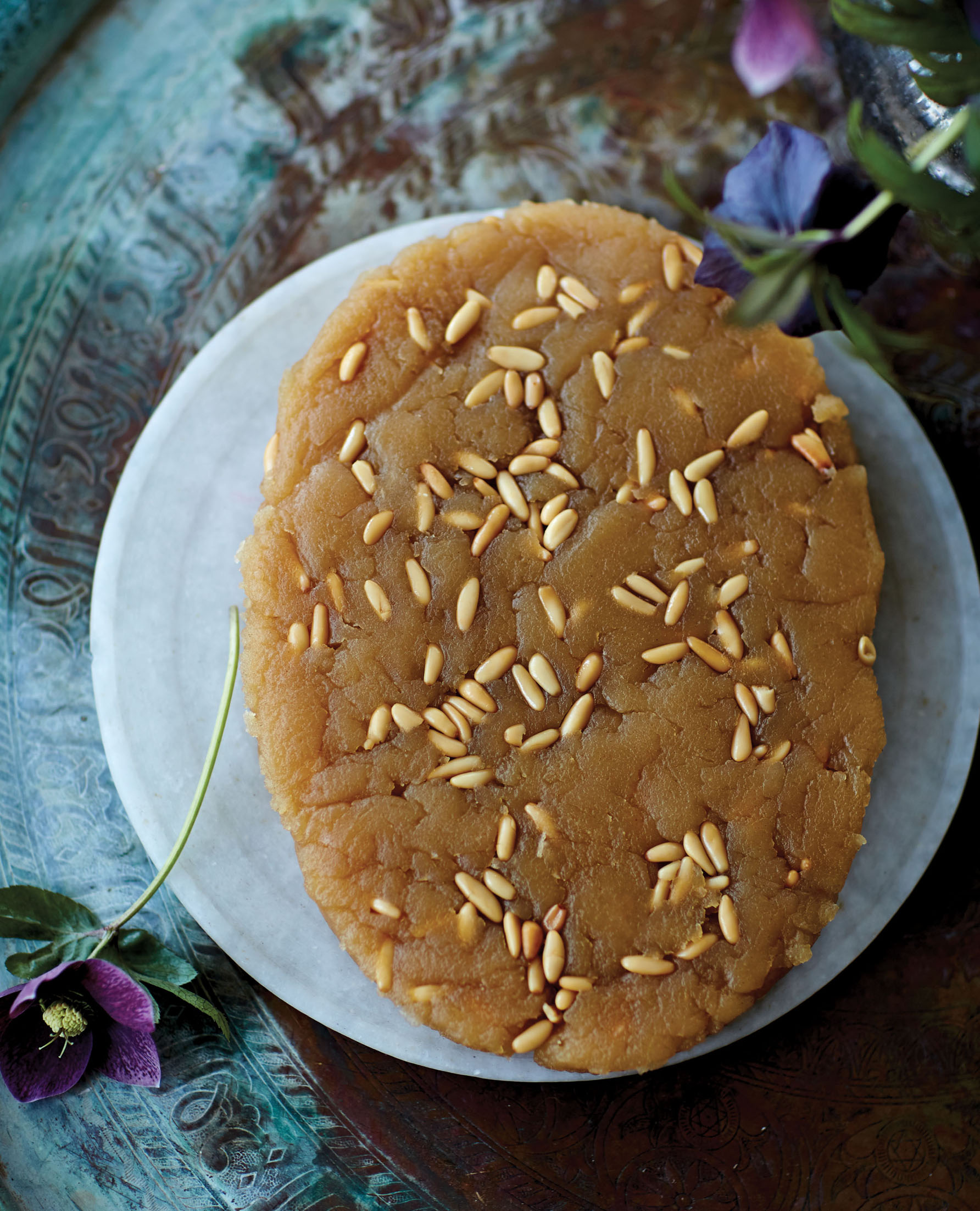UN HELVASI
TURKEY

Unlike complicated halvas such as tahini halva (see sidebar below), flour halva is much simpler and quicker to prepare. Here is the Turkish version that has added pine nuts, whereas the Iranian version has saffron. Both are delectable and when home cooks prepare halva, in Turkey and in Iran, they will often make more than they need so that they can send it out to their neighbors, friends, or family. Sharing halva is an absolute must during ‘Ashura, the day commemorating the killing of Hussein, the Prophet Muhammad’s grandson.
SERVES 6
1 stick plus 2 tablespoons (150 g) unsalted butter
¼ cup (50 g) pine nuts
1¼ cups (150 g) unbleached all-purpose flour
1 cup plus 2 tablespoons (225 g) superfine sugar
1. Melt the butter in a large heavy skillet. Add the pine nuts and flour and stir over low heat until golden. This may take as long as 45 minutes, but it needs to be done to get the nutty taste that is typical of a good halva.
2. Ten minutes before the flour is ready, put the sugar and 1⅔ cups (400 ml) water in a medium saucepan and place over medium-high heat. Bring to a boil. Let the syrup bubble for a couple of minutes, then add to the flour, stirring quickly and constantly to avoid lumps. Continue stirring until the mixture starts sticking to the pan. Take off the heat and let sit, covered, for 15 minutes. Transfer to a serving dish and serve warm.
HALVA
Halva in Turkey is the special occasion sweet par excellence, associated with both joyous and sad occasions. Making it allows people to come together—it takes constant stirring and more than one person will be in the kitchen taking turns stirring the flour or semolina halva; and at funerals a gathering over the preparation of a symbolic food lets people grieve together. There are many different types of halva. Some are made with flour, others with semolina, and others with tahini, although the latter is the preserve of specialized halva makers as it is too difficult and arduous to make at home.
The tahini halva makers I visited in Aleppo pressed their own tahini, which by itself is a complicated process—sesame seeds are first roasted, then soaked, then hulled, then finally pressed to produce tahini. Then they have to prepare the natef, a rather miraculous confection made with soapwort root that is like a soft meringue and finally, they have to mix the tahini with the natef, churning, then beating, then kneading it before it is finally tahini halva, which can be left plain or mixed with nuts or even chocolate now.